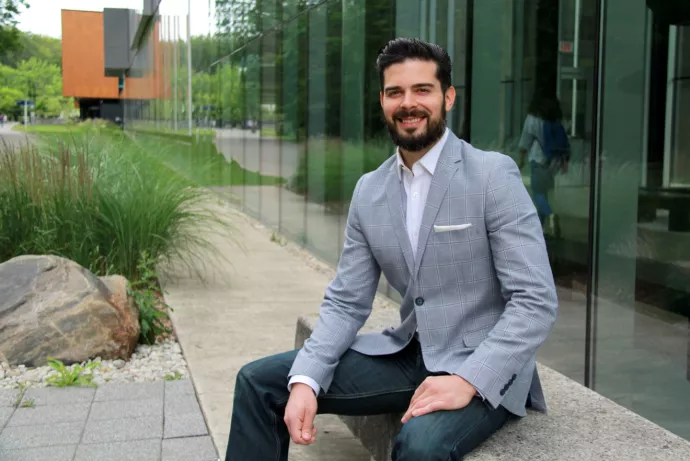
Dreams can vary across cultures and environments, UTM anthropologist finds
We’ve all experienced dreams that have left us feeling a little anxious – like writing a test we’re not prepared for, losing a loved one, or being chased by something threatening.
But David R. Samson, an associate professor in the department of anthropology at University of Toronto Mississauga, has discovered that dreams like these play out much differently across different socio-cultural environments – with dreamers from forager communities in Africa experiencing more social support within their dreams, while Western dreamers tending to focus more on individual stress and anxiety.
“Dreams are a universal human experience, but their content and significance can differ widely,” explains Samson. “We wanted to explore how the content and emotional function of dreams might vary across different cultural contexts. By comparing dreams from forager communities in Africa to those from Western societies, we aimed to understand how cultural and environmental factors shape the way people dream.”
As part of his research, published in Nature Scientific Reports, Samson, along with Sleep and Human Evolution Lab members Noor Abbas and Jeffrey Senese, plus colleagues from University of Geneva and other institutions, worked closely with the BaYaka in the Democratic Republic of Congo and the Hadza in Tanzania to record their dreams daily over a two-month period. For Western dreamers, they looked at dream journals and detailed dream accounts, collected between 2014 and 2022, from people living in Switzerland, Belgium and Canada.
While studying these dreams, the team began to notice a common theme.
“The dreams of the forager communities often began with threats but ended with resolutions involving social support, reflecting their strong social bonds,” Samson says. “In contrast, Western dreams tended to focus on less social aspects. This suggests that dreams are not solely products of neurophysiology, but are influenced by the cultural and social contexts of the dreamers.”
For example, Samson says an individual from a forager community might dream that they are facing a threat such as being attacked by a wild animal, or falling down a well. That dream was usually resolved with the person being rescued by a member of their community – which highlights the role of social support within their communities.
In contrast, when individuals from Western societies faced a threat in their dream – like failing an important test or learning that a loved one had died – there was less emphasis on social support, and more on the stress and anxiety that the person was feeling within their dream.

While the research doesn’t solve the question of why people dream, Samson says it sheds light on how culture influences the emotional function of dreams.
“The ultimate purpose of dreaming is still a subject of ongoing research and debate,” he says. “Some theories suggest that dreaming serves to simulate threatening or social situations, helping individuals prepare for real-life challenges. However, the exact function of dreams continues to be a fascinating and evolving area of study.”
Samson adds that the researchers hope their findings encourage further studies into the relationship between culture, society and the emotional function of dreams – which could help inform important mental health research.
“Understanding these connections can offer insights into the human mind and emotions,” he says. “Additionally, it may have practical applications in fields such as psychology, where dream analysis could provide a culturally sensitive approach to understanding and addressing mental health issues.”
